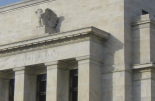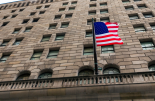T. Rowe Price: Market still thinking wrongly about the Fed

A 25bp hike is all but guaranteed at today’s Fed meeting. However, the idea that this is the last hike, and that cuts will soon follow, is too optimistic.
Inflation is still high/persistent, even if it is slowing, so is the labour data. Why would an FOMC that faces the biggest inflationary challenge in decades be ready to declare the end of tightening for this cycle and run the risk of the data forcing its hand to make a hawkish U-turn?
March Dot Plot shows why we should be cautious
Right after SVB’s failure in March, 7 FOMC participants expected one more hike would be warranted after the May meeting. The new information we have received since March suggest that: (1) inflation remains persistent in the core measure, even if energy based effects show significant progress in headline inflation, (2) employment has remained strong (the Q1 pace of payroll growth at 345k was higher than in Q4 2022) and (3) banking stress + market volatility has subsided versus its elevated level in March.
It is hard to be exactly right about the peak interest rate, but we can have relatively strong conviction about a couple of thing: (1) we are very close to the end and (2) the Fed will not be able to cut interest rates significantly this year. It will not blink in the face of weaker economic data and the policy pivot will come late. 2022 could be the year that markets expected the Fed pause too soon, and 2023 risks being the year markets price Fed cuts too soon.
The Fed will continue to follow the data, and the data points to a pause, not cuts
Banking sector stress is a factor that will come under consideration, but for the right or wrong reasons, the FOMC will likely conclude that a combination of the market measures announced so far and a well-capitalized banking sector will give it the needed room to pursue bringing inflation down to its 2% target.
What data will influence the Fed’s thinking though?
Looking at the consumer price index (CPI), and personal consumption expenditure (PCE) for example, inflation is slowing significantly, driven by energy base effects.
The labour market is starting to soften. This can be seen from measures such as job openings and hires. However, a key point is that the unemployment rate is about three and half percent, which is still low, and weekly unemployment claims are low despite the uptick in layoffs.
A further tightening in credit conditions is widely expected. The Senior Loan Officer Opinion Survey (SLOOS) data will be released next week. Lending conditions and demand for loans has already slowed significantly. The FOMC will already have discussed it at the meeting this week and Powell will probably give hints to the outcome during the press conference.








